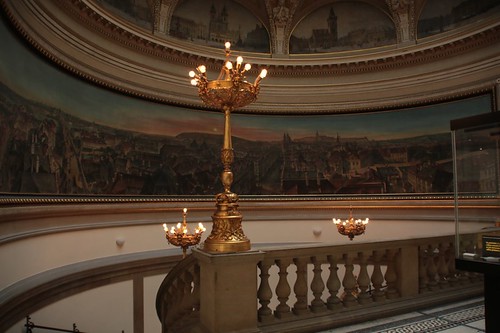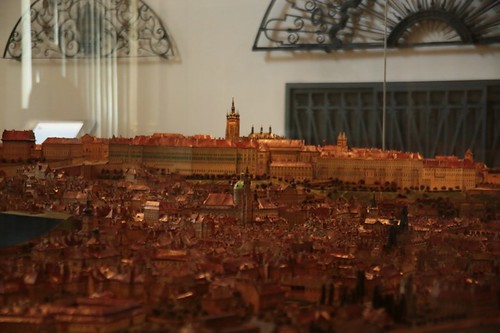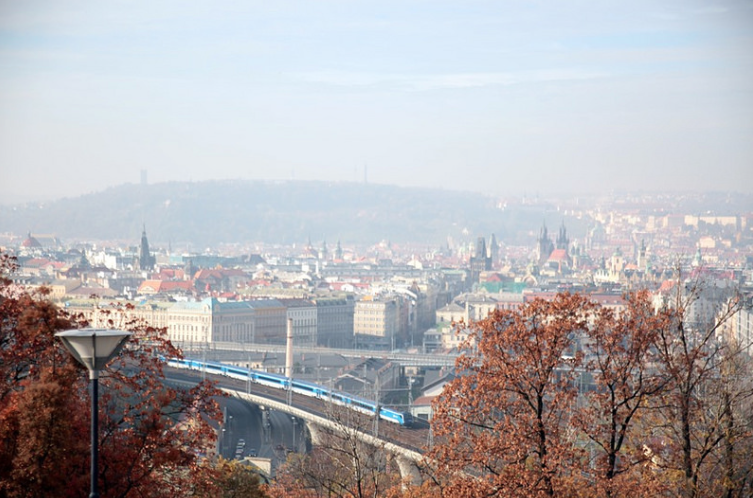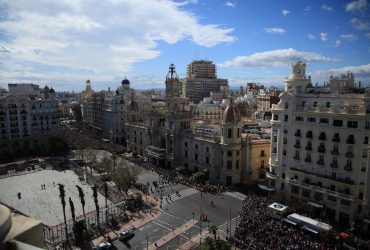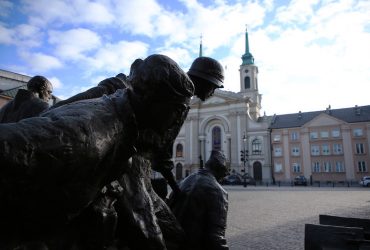Today I want to tell you about six places in Prague that, in my opinion, you should visit (or at least see passing through, while going to some other destination in the city). I will tell you this through a “reasoned path”, without tossing you from one side of the city to the other, hoping that this way of saying you about them will be useful if you would like to see them too.
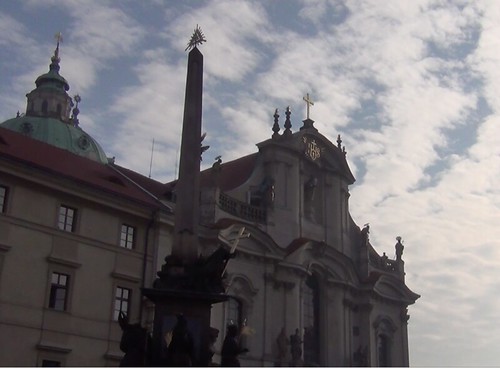 Let’s begin with the St. Nicholas Church in Mala Strana. It’s located near the Charles Bridge, along the road that goes towards the castle (if you don’t want to walk, tram number 12 and number 22 passes nearby the church). It struck me a lot because, despite being “very large” fits perfectly in the streets of the area, between the buildings that line the streets leading to the castle. Now I move more inward, always in the “castle side” of Prague, to tell you about another place that has positively affected me for some aspects and negatively for others. Let’s go to the Strahov Monastery.
Let’s begin with the St. Nicholas Church in Mala Strana. It’s located near the Charles Bridge, along the road that goes towards the castle (if you don’t want to walk, tram number 12 and number 22 passes nearby the church). It struck me a lot because, despite being “very large” fits perfectly in the streets of the area, between the buildings that line the streets leading to the castle. Now I move more inward, always in the “castle side” of Prague, to tell you about another place that has positively affected me for some aspects and negatively for others. Let’s go to the Strahov Monastery.
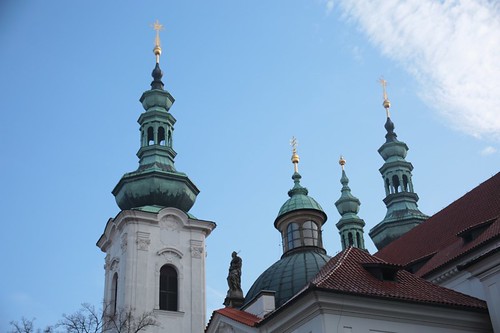 You can get there taking the tram 22 and then walk a stretch of road. Founded in the 12th century by Vladislao II, various buildings are visible within the complex: the monastery, where there are several halls and one of the most important Central European collections of gothic paintings, and the Strahov Library, where there are many medieval manuscripts, maps and globes. There is a ticket for each building you want to visit and for each ticket you have to add the one to take pictures and videos because otherwise, you can’t do either. The rooms of the library are beautiful, too bad that it is possible to enter only with
You can get there taking the tram 22 and then walk a stretch of road. Founded in the 12th century by Vladislao II, various buildings are visible within the complex: the monastery, where there are several halls and one of the most important Central European collections of gothic paintings, and the Strahov Library, where there are many medieval manuscripts, maps and globes. There is a ticket for each building you want to visit and for each ticket you have to add the one to take pictures and videos because otherwise, you can’t do either. The rooms of the library are beautiful, too bad that it is possible to enter only with
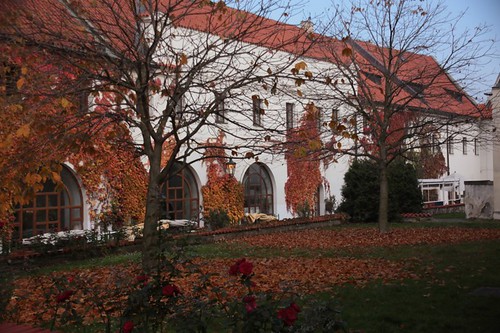 guided tours. As I told you this complex had struck me for various reasons: positively because it is a lovely place, where tranquillity reigns and the interior rooms are “a show” that rarely seen around.
guided tours. As I told you this complex had struck me for various reasons: positively because it is a lovely place, where tranquillity reigns and the interior rooms are “a show” that rarely seen around.
On the other hand, it hit me negatively, however, for various reasons! 1) for the fact that you pay the ticket for each building;
2) for the point of having to pay a separate card to take pictures (and videos) and without you can not even take one;
3) it seems that the management of this place with a strong tourist attraction is mainly devoted to wanting to “strip the tourists” as much as possible (there are a lot of restaurants/ bars/places where visitors can stop
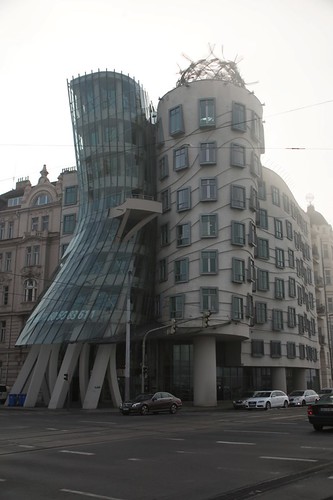 to buy and personally I do not like the exaggeration). Now we cross the Vltava because I want to take you to see the Dancing House. It is a building with a particular shape, inside which there are offices (therefore not open to visitors) and a French restaurant on the top floor. The particular form to which I refer is that which reminds (or at least should) a couple of dancers, the reason for which the name derives and for which, initially, it was called “Fred and Ginger” (by Fred Astaire and Ginger Rogers). The building is built in a style that incorporates Neo-Baroque, Neo-Gothic and Art Nouveau, all forms for which the city of Prague is famous (so I learned while looking for information about the town before leaving). I liked seeing in pictures, I was intrigued to see it “live” to appreciate its shape better, and I must admit that I was amazed: my expectations were not disappointed, the building, hit me, exactly how it did when I saw him in the picture. After taking photos of the building, we move further away from the river to enter the streets of the Vinhorady area. This area gained its name because in the past it was an area of vineyards (I always like to discover these things, the stories of a city, to learn it and understand it even better when, then, I will come to visit it).
to buy and personally I do not like the exaggeration). Now we cross the Vltava because I want to take you to see the Dancing House. It is a building with a particular shape, inside which there are offices (therefore not open to visitors) and a French restaurant on the top floor. The particular form to which I refer is that which reminds (or at least should) a couple of dancers, the reason for which the name derives and for which, initially, it was called “Fred and Ginger” (by Fred Astaire and Ginger Rogers). The building is built in a style that incorporates Neo-Baroque, Neo-Gothic and Art Nouveau, all forms for which the city of Prague is famous (so I learned while looking for information about the town before leaving). I liked seeing in pictures, I was intrigued to see it “live” to appreciate its shape better, and I must admit that I was amazed: my expectations were not disappointed, the building, hit me, exactly how it did when I saw him in the picture. After taking photos of the building, we move further away from the river to enter the streets of the Vinhorady area. This area gained its name because in the past it was an area of vineyards (I always like to discover these things, the stories of a city, to learn it and understand it even better when, then, I will come to visit it).
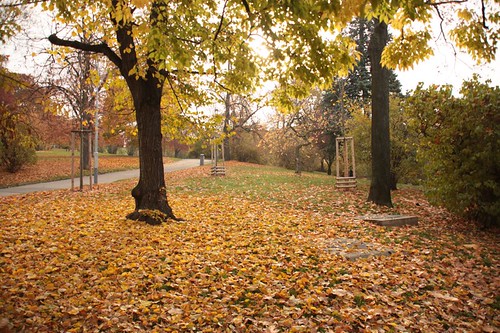 I then take you to Riegrovy Sady, or Rieger gardens (of which we find a statue inside the park), the largest public garden in the area. You know that public parks always like me a lot, I like to visit them to discover something more about the city itself. Here was the same thing, it allowed me to “throw a blind eye” on the life of the area and the park, on the life of those who live here all year round. It is a park that is over a hundred years old and has so many hidden things that, in reality, should be discovered (there is also a large restaurant where you can relax and warm up a bit during the winter). Ours was a fast walk while we were going to our next destination, but the park is awe-inspiring: I found it very quiet, populated by Prague citizens and some tourists, made very special by the autumn colours of the foliage. I also recommend a short walk to this park
I then take you to Riegrovy Sady, or Rieger gardens (of which we find a statue inside the park), the largest public garden in the area. You know that public parks always like me a lot, I like to visit them to discover something more about the city itself. Here was the same thing, it allowed me to “throw a blind eye” on the life of the area and the park, on the life of those who live here all year round. It is a park that is over a hundred years old and has so many hidden things that, in reality, should be discovered (there is also a large restaurant where you can relax and warm up a bit during the winter). Ours was a fast walk while we were going to our next destination, but the park is awe-inspiring: I found it very quiet, populated by Prague citizens and some tourists, made very special by the autumn colours of the foliage. I also recommend a short walk to this park
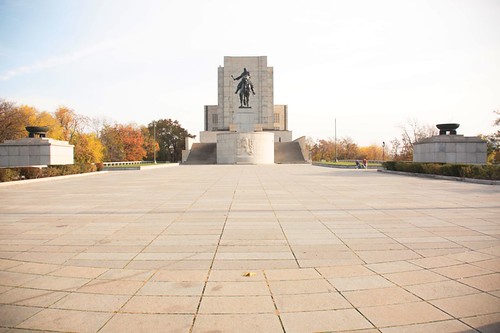 because you will be amazed. We walked in through this park to arrive at the National Monument, located at the top of Vítkov hill and was built between 1928 and 1938 in honour of the Czechoslovak legionaries. It also includes the Tomb of the Unknown Soldier, the monumental equestrian statue of Jan Žižka (really monumental, regarding size) and there is also a café with a panoramic view of Prague. We have caught a day in which a military commemoration was held here so we couldn’t see the museum inside, but even the external view and the panorama are worth a visit and the effort to make the road uphill.
because you will be amazed. We walked in through this park to arrive at the National Monument, located at the top of Vítkov hill and was built between 1928 and 1938 in honour of the Czechoslovak legionaries. It also includes the Tomb of the Unknown Soldier, the monumental equestrian statue of Jan Žižka (really monumental, regarding size) and there is also a café with a panoramic view of Prague. We have caught a day in which a military commemoration was held here so we couldn’t see the museum inside, but even the external view and the panorama are worth a visit and the effort to make the road uphill.
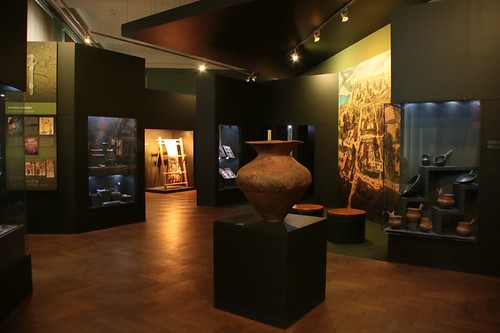 The last place I would like to talk to you today, concluding this route through the Czech capital, is the Prague City Museum. The museum was housed in a neo-Renaissance building that was initially built for what was once the Prague Royal City Museum. The exhibition tells the story of Prague and its territory from prehistoric times until 1784. The most exciting thing about the whole museum is the model of the city of Prague made by Langweil between 1826 and 1834. This model it is a unique document on the appearance of the Old Town, the Small City and the Prague Castle at the turn of the nineteenth and
The last place I would like to talk to you today, concluding this route through the Czech capital, is the Prague City Museum. The museum was housed in a neo-Renaissance building that was initially built for what was once the Prague Royal City Museum. The exhibition tells the story of Prague and its territory from prehistoric times until 1784. The most exciting thing about the whole museum is the model of the city of Prague made by Langweil between 1826 and 1834. This model it is a unique document on the appearance of the Old Town, the Small City and the Prague Castle at the turn of the nineteenth and
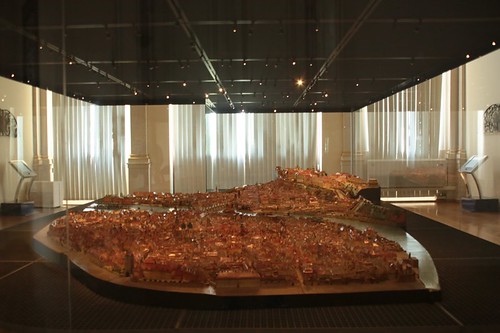 twentieth centuries. The only thing I don’t recommend for this small museum is the “film – video” in 3D that takes viewers “for a ride” to Prague through the model I just talked about. It seems to be done with fairly low video quality, it looks like it’s done with cheap equipment, it does not do justice to the Langweil model, and it also makes a headache! Apart from this unique (and lonely) negative note, I hope I have made you want to visit these places in Prague. Let me know if you will see them and, if you have already seen them, let me know your opinion about it. I leave you with some other pictures of the Museum.
twentieth centuries. The only thing I don’t recommend for this small museum is the “film – video” in 3D that takes viewers “for a ride” to Prague through the model I just talked about. It seems to be done with fairly low video quality, it looks like it’s done with cheap equipment, it does not do justice to the Langweil model, and it also makes a headache! Apart from this unique (and lonely) negative note, I hope I have made you want to visit these places in Prague. Let me know if you will see them and, if you have already seen them, let me know your opinion about it. I leave you with some other pictures of the Museum.
